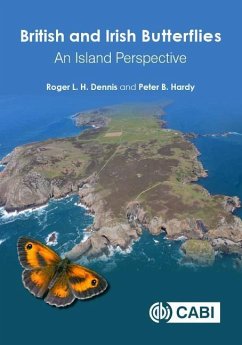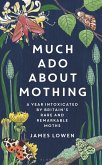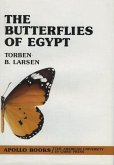Islands are special places; they can be havens for unique plants and animals and refuges for wildlife. This book investigates the biogeography of butterfly species over the British islands, particularly the factors that influence their presence on the islands and that have made each island's butterfly fauna distinctive. The book contains a full log of records of species on the islands and much supporting information. The first three chapters set the scene, illustrating the basics of island biogeography theory, their changing circumstances during the current Holocene interglacial, and studies of natural history of British butterflies that mark the islands as the most intensively studied region for wildlife in the world. The book advances by increasing resolution downscale from a European continental perspective, through patterns and changes on the British mainland, a comparison of the two dominant islands of Britain and Ireland, to a close inspection of the dynamics of species on the multitude of offshore islands. Detailed investigations include contrasts in species' richness on the islands and then of the incidences of each species. Case studies highlight the continual turnover of species on islands. Attention is then given to evolutionary changes since the time that glaciers enveloped Europe. A powerful message is conveyed for the maintenance of butterfly species on the smaller British islands now experiencing population losses at a rate unprecedented since the spread of the last ice sheets: the incontrovertible importance of maintaining populations of species on nearby mainland sources for islands as pools for future migrants. This book is enhanced with supporting material. To access the Online Supplementary Appendices below, please visit: http://www.cabi.org/openresources/95061. Supplementary Appendices Chapter 3 3.1a A copy of Dennis and Shreeve (1996) Butterflies on British and Irish Offshore Islands: Ecology and Biogeography. Gem Publishing Company, Wallingford, Oxon 3.1b The main data file for British and Irish offshore islands 3.2 Basic ecological and life history data used to build the indices for migration capacity and colonization ability Supplementary Appendices Chapter 4 4.1 Contemporary Geography Study of British Butterflies: Data 4.2 Contemporary Geography Study of British Butterflies: Analyses Supplementary Appendices Chapter 5 5.1a The European Islands Data File: Recent Sources 5.1b The European Islands Data File: Butterfly Records 5.1c The European Islands Data File: Geographical Data 5.2 Comparison of British and Irish Species Distributions Supplementary Appendices Chapter 6 6.1a Species Incidences on Offshore Islands: Logit Regression Analyses 6.1b Species Incidences on Offshore Islands: Discriminant Function Analyses 6.2 Species Richness and Incidences on Offshore Islands: Predictions Supplementary Appendix Chapter 7 7.1 Records and Data for the Isle of Man








